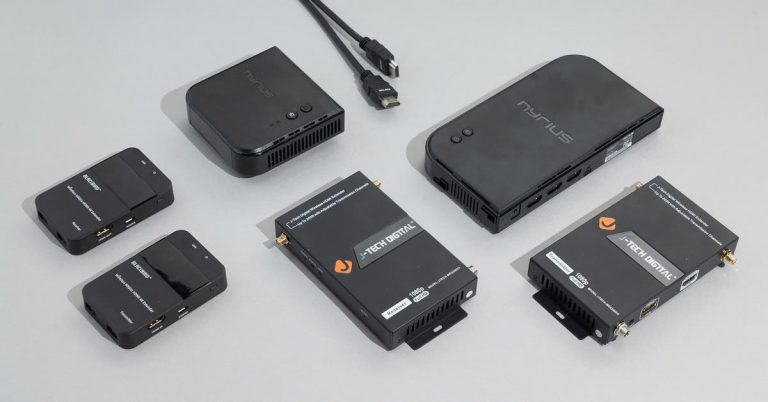The 3 Best Transcription Services of 2025

Top pick
GoTranscript is the best transcription service for highly accurate human transcription, and it also delivers better-than-average AI-powered transcripts.
Its editor is basic, but the service includes a number of features that can speed up your work. You can get a free AI transcript preview of the first two minutes of your audio, which allows you to determine whether the quality is sufficient before paying — and if it isn’t, you can upgrade to a human transcription. You get your transcript emailed as a Word document. And it’s HIPAA-compliant, so it’s ready for health-care use.
Its human transcriptions were over 99% accurate in our tests. The words that GoTranscript’s human transcribers missed were more likely to be filler words (for example, writing “while” instead of “and while”) rather than entirely incorrect words. Spoken names that other transcription services frequently misspelled (including “Sagen Maddalena,” “Will Shaner,” and “Joel Embiid”) were transcribed accurately. GoTranscript’s results were close enough to perfect that we had to look carefully for differences.
GoTranscript cleans up transcriptions for readability. Generally that’s good, though in our experience it sometimes affected quality. Filler words including “you know,” “like,” and “kind of” were removed, and a misspoken “there’s a qualified” was turned into the more accurate “there’s a qualifier.” And you have to watch out for apparent fillers that are actually modifiers, as in an instance where “kind of” was removed, which mildly altered the meaning of a sentence.
Of the other inaccuracies we found, “vlog” was mistaken as “blog,” “C#” was written as “CShark,” and “AI” came out as “AGI.” A single word — “Caucasus” — was marked as “[unintelligible]” rather than being guessed, which was what many other services would do.
To improve accuracy, you can email the GoTranscript team to add industry-specific flags to your account for medical, technical, and legal terms, or to add custom words to your account’s dictionary. It lacks an in-app dictionary feature, though, something offered by competing services such as Rev and Scribie.
Its AI transcripts were worse at names but still 98.9% accurate. That’s a better result than what we got from all but one of the human-powered transcription services we tested, at a fraction of the time and price.
It missed one name (transcribing “Sagen” as “Sajan”) and used the British English spelling “catalogue,” with no option for us to choose between US and British English spelling. It also had a few issues with our final test clip: It wrote the pangram without spaces, rendered “AI” as “AVI,” and turned “streaming” into “steaming.” One clip had a phantom “Thank you” added to the end.
But the transcripts it made in our tests were clean and readable, and the AI handled crosstalk, repeated words, and other verbal issues well. The results are close enough to perfect that, for clear audio without uncommon words, you might be able to use them without any edits.
The interface is designed for you to upload audio and get it transcribed as quickly as possible. You can order transcription in around five clicks and download a completed transcript in a single click. When ordering, you can choose AI or human transcription, after which you can upload an audio file in nearly any popular format (MP3, M4A, WEBM, OVG, and video files including MP4 and WMV) or paste a link to a Dropbox or Google Drive file or a YouTube or Vimeo video.

For human transcription, you can then choose between clean verbatim (without filler words such as “um” and “you know”) or full verbatim for an additional 25 cents per minute. Additional paid add-ons include time stamps, support for three or more speakers, and support for low-quality audio.
For audio that’s shorter than 2,500 minutes, six- to 12-hour transcription turnaround starts at $2.75 per minute, with one-day ($1.60 per minute), three-day ($1.40 per minute), and five-day ($1.20 per minute) options also available.
AI transcripts list speakers by default but don’t offer time stamps, so you have no option to add services. One nice bonus: When ordering an AI transcript, you can click a Check AI Accuracy button to get a quick preview of the first two minutes of your audio’s text. If the results aren’t accurate enough, you can upgrade to human transcription.
It’s fast. In our tests, GoTranscript AI took 6 minutes to transcribe our entire batch of recordings — less than one minute per minute of audio. It was faster than Reduct and Rev AI, though slower than Vook.ai, OpenAI Whisper, and Descript.
But GoTranscript’s human transcripts came back between 58 minutes and 2 hours 30 minutes after we placed our order — significantly faster than the anticipated one-day turnaround, similar to Rev’s human-transcription time, and faster than Transcription Panda (which took 6 hours 30 minutes for similar transcripts with its one-day turnaround service).

Accessing transcriptions is easy, but the editing and collaboration features are basic. Once transcription is complete, you get an email with a link to a Word document. Since you don’t need to be logged in to access the doc, you can forward a transcript to a colleague without needing to share account access.
GoTranscript includes a basic online editor where you can download the transcript in plain text, PDF, or subtitle format, customize the speaker names, and edit the text. You can listen to your audio synced with the text, as well, though you may need to reupload your audio if it has been several days since you ordered your transcript.
Collaboration is similarly basic: You can copy a sharing link to the transcription editor, where colleagues can edit the text but not actually save the edits. Or, you can add transcripts to a shared workspace for team access with the same basic editor features. You can filter transcripts by date and order, but you cannot search through all recordings together.
It’s safe to use with sensitive information. The service uses in-house transcription software and promises that only employees and transcribers who need to perform specific tasks can access personally identifiable info. It’s also HIPAA-compliant, and it encrypts data while in storage and in transit.
Audio is stored for seven days after transcription is complete, while text transcripts are stored in your account until you delete them. If necessary, you can also request that the GoTranscript team sign an NDA for an additional layer of privacy for your audio and transcripts.
Flaws but not dealbreakers
You can’t place orders or view completed transcripts through the mobile app. Although GoTranscript offers an iOS app, it can only upload audio to GoTranscript. Afterward, you need to go to the website to place your order and then read your completed transcript in the web app or download the transcript from your notification email.
GoTranscript’s online editor is barebones. You’ll find no formatting options or keyboard shortcuts. If you pay for time stamps in your transcripts, you can’t turn them off in the interface — the only way to remove them from the text is to edit them out manually. And the editor doesn’t include integrations with Dropbox, Zapier, or other popular automation tools.
The cheapest rates require large orders and long turnaround times. Human transcription starts at an advertised $1.02 per minute — but you can get that rate only by ordering over 10,000 minutes of transcription with a five-day turnaround. Three-day turnaround is listed as the most popular option, but that might seem prohibitively long for most needs today, when AI can offer a good-enough transcription in minutes.







